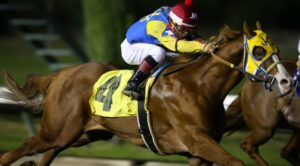Key Moments:
- In 2025, U.S. horse betting relies on the pari-mutuel system via Advance Deposit Wagering platforms
- European markets, particularly the UK and Ireland, feature fixed odds and dynamic betting exchanges
- United States operates under a fragmented regulatory model, while Europe maintains a unified regulatory approach
Contrasting Betting Mechanisms
The structure of online horse betting in 2025 remains defined by significant differences between the United States and Europe. The foundation of each market is shaped by its predominant betting model, with the U.S. favoring pari-mutuel wagering and Europe embracing fixed odds systems.
| Region | Primary Betting System | Key Features |
|---|---|---|
| United States | Pari-mutuel (via ADW Platforms) | Betting pools, fluctuating payouts, agent-based platforms |
| Europe | Fixed Odds | Locked-in payouts, competitive odds, betting exchanges |
United States: The Pari-Mutuel Approach
In the U.S., online horse wagers are placed through Advance Deposit Wagering platforms. These platforms channel bets into collective pools, combining all wagers for a race. The track takes a defined percentage, while the remainder is distributed among those who win. As the pool size changes up to the start of the race, so do the potential payouts. Therefore, bettors are unable to determine exact winnings before the race begins. This approach is fundamentally linked to racetrack infrastructure, with the ADW platforms serving as intermediaries between users and the betting pools.
Europe: The Fixed Odds Model
Across Europe, and especially in the UK and Ireland, fixed odds dominate the horse betting landscape. Bettors receive a guaranteed payout at the moment they place a wager, regardless of subsequent odds shifts. Here, bookmakers oversee risk management and generate revenue by setting prices that attract competition from other operators. This structure means bettors enjoy certainty regarding their potential winnings. Furthermore, the spread of betting exchanges enables participants to bet against one another, opening opportunities to lay horses and secure market-influenced prices.
Differing Regulatory Structures
Regulation further differentiates the continents. The U.S. regulatory climate is highly fragmented, as each state enforces its own rules on horse race betting platforms, including those for age limits and permissible types of bets. The fragmented nature presents operational hurdles for companies attempting interstate expansion. The proliferation of sportsbooks has also increased competition, placing additional pressure on traditional ADW platforms.
In contrast, Europe features a unified regulatory model with bodies such as the UKGC providing standardized oversight on issues ranging from licensing to responsible gambling. This coordinated approach, coupled with horse racing’s deep cultural significance, enables bookmakers to concentrate on product and service innovation within stable policy frameworks.
Conclusion
Despite both regions sharing strong traditions of horse racing, their online betting markets present distinct operational and regulatory characteristics. The U.S. remains committed to pari-mutuel betting, evolving within a patchwork of state-driven rules, whereas Europe’s fixed odds and innovative betting exchanges flourish under uniform oversight. These differences continue to define the online horse betting experience for participants and operators in 2025.
- Author


